Navan Fort is situated on a drumlin outside Armagh City in a rich archaeological landscape that includes Haughey’s Fort, The King’s Stables and Loughnashade. Navan Fort is identified as Emain Macha, the legendary capital of Ulster, celebrated in the heroic tales of the Ulster Cycle and comparable to other royal sites in Ireland. According to tradition, Knockaulin (Dún Ailinne) in Co. Kildare was the site of the inauguration of the Kings of Leinster, Tara in Co. Meath was associated with the Kings of Meath and Navan Fort was known as the seat of Kings of Ulster. The Navan Fort complex shows evidence of occupation dating back to the Neolithic period, but its the evidence from the Late Bronze Age and Early Iron Age that reinforces Navan Fort’s importance as a regional centre.
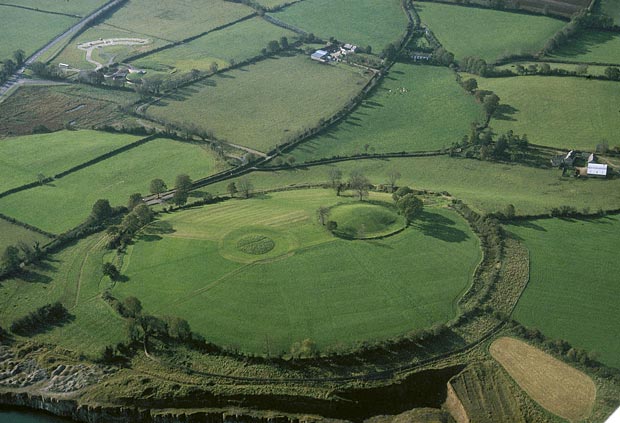
Aerial view of Navan Fort [copyright NIEA]
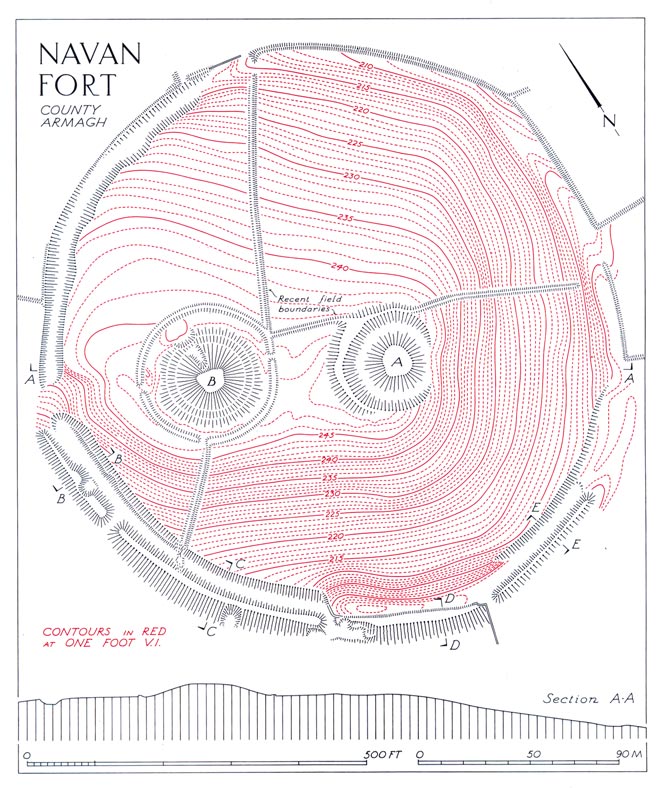
Plan of Navan Fort showing Site A and Site B and surrounding Enclosure [copyright NIEA].
The Navan Fort Enclosure
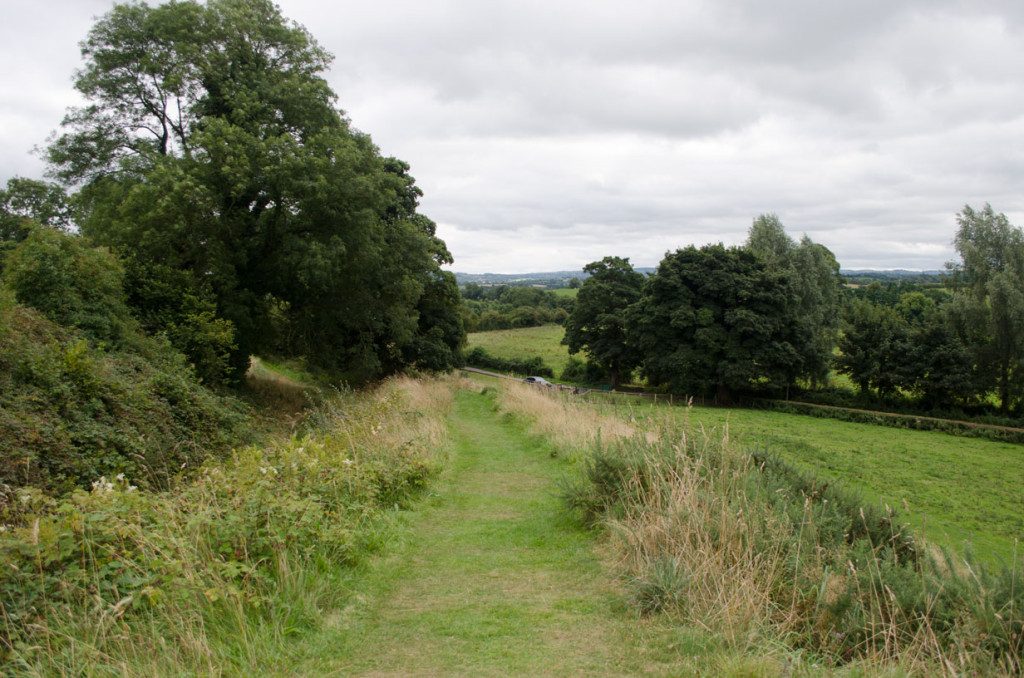
Navan Fort Enclosure – top of the Ditch
The construction of the enclosure coincides with the creation of the ceremonial mound c. 100BC. The earthwork consists of a substantial circular ditch with an external bank. The use of an inner rather than outer ditch suggests that the fort was used as a sanctuary or as an enclosed sacred place rather than as a defensive position. Where preserved, the bank is 15m wide and 4m high. The bank has been ploughed down in some areas and the ditch, which has been filled in by years of silting, was considerably lower than its current level.
Navan Fort – Site A – The Ring Barrow
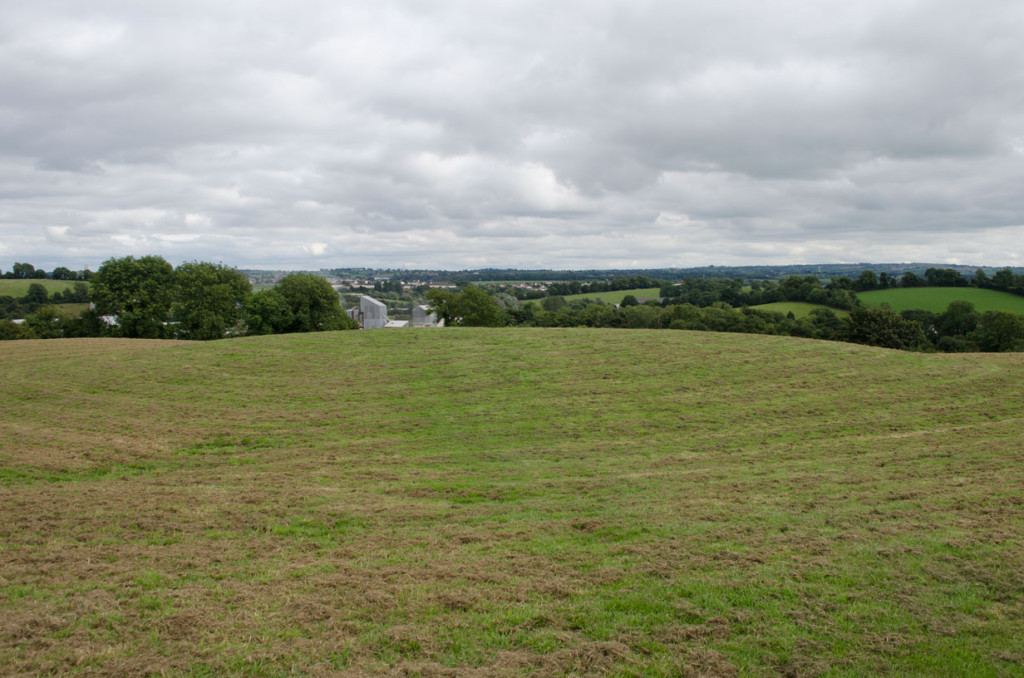
Navan Fort – site A – Ring Barrow
The centre of the ringwork lies 30m south-east of the centre of the enclosure. A ring-shaped hollow is formed from a filled-in ditch which would have been 30m in diameter. Site A‘s features; the small internal area, the lack of entrance and internal ditch suggest it was used as a ceremonial monument. Excavations of the barrow uncovered three concentric slots which may have been used as foundation trenches to secure the bases of wooden walls. A later excavation at Site C, close by, uncovered a similar pattern and the two sets of concentric slots were found to join together to form a large figure of eight structure. This 50 m long, Iron Age structure is contemporary with the construction of large wooden building at site B and can be dated to c. 100BC.
Navan Fort -Site B The Artificial Mound
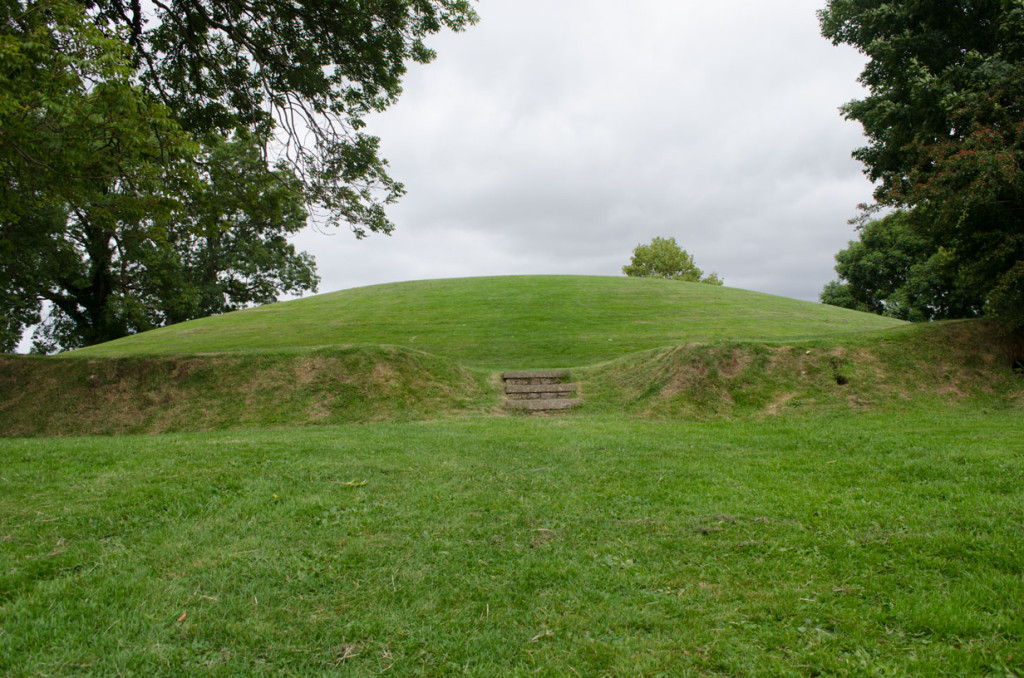
Navan Fort – site B – artificial mound
Site B lies about halfway between the centre of the enclosure and its perimeter and consists of a large artificial mound, 40m in diameter. Excavations revealed that the mound contained a number of occupation layers dating from the Neolithic period through to the Iron Age. The mound was artificially formed in the Iron Age and consists of layers of soils and turves resting on a mound of stones. This cairn had been created within a wooden building which was then set alight. Underneath the wooden building, layers of concentric slots were discovered which provided evidence of multiple figure of eight wooden structures.
